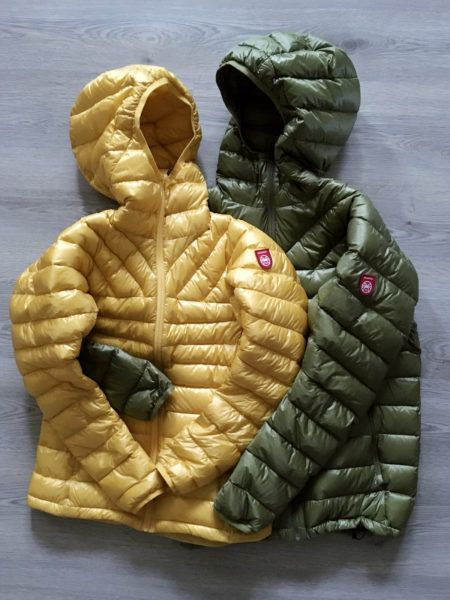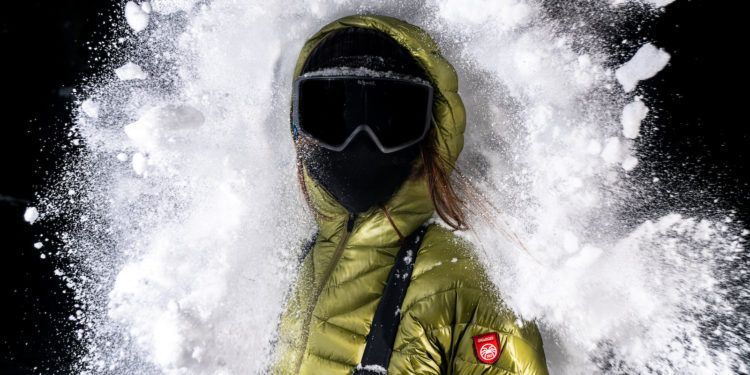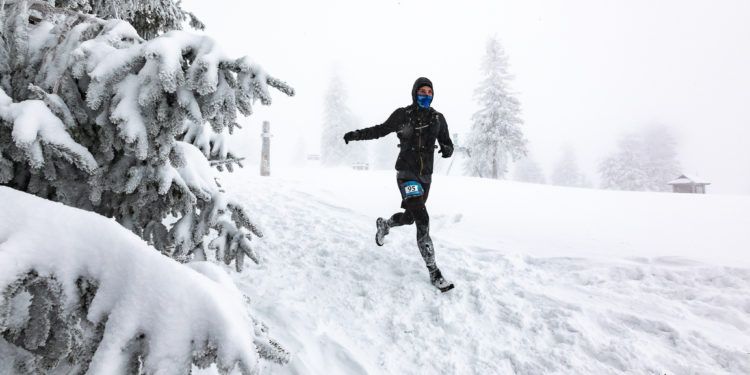How to take care of down products? Advice from our expert – Wojciech Klapci
Winter is the time when we appreciate our down jackets and sleeping bags the most. But what to do to make them serve us for as long as possible? Here’s expert advice from Pajak – Wojciech Klapci.
Packing
Never fold or roll a jacket or sleeping bag! You always do the folding and rolling the same way. This results in a permanent deformation on the fabric (like an edge in pants) and on the insulation, thus you create a permanent thermal bridge running exactly in the longitudinal axis of symmetry of the sleeping bag. The most appropriate technique is to stuff the product into the cover. This apparent “by-ness” does not allow kinks to form in the same places. In the case of a jacket, a good method is to pack it in its own sleeve. Remember to take off the compression straps only while crushing the product (with your hand, knee, etc…).
Storage
Regardless of the type of filling, high-fill products do not like compression. So store them in a place that is spacious enough for the volume of the product. If you want to hang your sleeping bag, never fold it in half, putting it through the hanger. A better solution would be to use hanging loops – almost every sleeping bag has them. From time to time down products are worth ventilating, but remember that all artificial materials – I mean outer fabrics – do not like UV radiation. Radiation affects the slow degradation of fibers. So it is prudent to ventilate in the shade. For sleeping bags, remember to air on the left side. Linings almost always breathe better than the outer fabric (fabric without a membrane breathes better than fabric with a membrane).

fot. Pajak brand materials
When to wash
Wash natural down regularly, contrary to popular belief, the washing process prolongs the life of down and restores its loft. Synthetic down should be washed only when necessary, the right moment will be indicated by your senses of smell and sight. Here, unfortunately, successive washes cause loft to deteriorate (the fibers of the warming material arrange themselves into a flatter and flatter structure).
Hydrophobic down – contrary to the marketing of some brands, the hydrophobicity of down is not permanent. The loft itself can be restored almost the same as in the non-impregnated version, but the struggle for water repellency forces less frequent washing and the need for a dedicated agent.

Wash natural down regularly – contrary to popular opinion, the washing process prolongs the life of down and restores its lof (fot. Pajak)
In what to wash
Natural down will not be harmed by virtually any laundry detergent, unfortunately synthetic fabrics are more sensitive, especially to softeners. So use a specialized detergent for washing down products (they are used for natural and synthetic insulations). Mountval, Grenders, Nikwax are good choices, or you can use mild detergents such as Jelp Classic or White Deer. With hydrophobic down there is only one product: Nikwax’s Down Wash Direct (let’s ignore the feathers on the down wash label).
Washing
You can, of course, wash by hand, however, it will be more convenient in the washing machine. To do this, just follow a few simple steps:
- Remember that mental training is most important! Set yourself up for the product not to look promising when you take it out of the washing machine…
- Set the washing machine to the Wool program and temperature 30℃. If you have the option, turn on the highest rinse stage (e.g. “for allergy sufferers”).
- Check all pockets, secure Velcro, necessarily turn the sleeping bag inside out.
- Deceive the washing machine! Almost all washing machines manufactured in this millennium have weight automation specifically to save water. The problem is the weight of ultralight products [1]. In older appliances, you only need to pour 2-3 liters of water into the drum. Newer washing machines, however, are smarter and pump the water out of the drum just before you start washing, in which case put soaked products in the washing machine or add other heavy clothing.
- Right after washing (remember the first point) do not break down and put the product in the tumble dryer (low temperature, longer cycle). Don’t have a tumble dryer? No problem – spread the washed sleeping bag or jacket on a regular dryer and put it in a well-ventilated room.
- When the product dries, dry it again for as much time as the wash has elapsed.
After washing and drying, you have left streaks
Most likely, you have not cheated the washing machine, and the stains are unwashed detergent. Put the product in the washing machine and set it to rinse or wash again without detergent.
The product has lost loft (synthetic)
A natural feature of synthetics is minimal loft loss after each wash. This is due to differences in the structure of the insulation itself compared to natural down. Flat polyester fibers are arranged in a spatial structure, while use, compression and washing cause the fibers to fit better and gradually lose loft. In natural down we are dealing with three-dimensional structures with shape memory.
The product has lost loft (natural fluff)
You washed a down jacket, and it doesn’t quite have the loft, the down seems to be missing? This is normal, you must now help the down to return to its full form. The down is blocked in the chambers, to help it expand, spread the product on a level surface and start “clapping” it on the place where there is the most down. Spread the shifting down this way evenly throughout the chamber. Such an operation takes up to 15 minutes of time, and thanks to it the beloved jacket looks and behaves like new.
The product smells badly
During drying, the dryer was closed in a room with poor air circulation, or the product was removed from the washing machine several hours after the wash was finished. Wash again and dry in a better ventilated room.
Wojciech Klapcia
[1] Personal example – a washing machine with a drum with a load of 9 kg vs. a winter down sleeping bag weighing 750 g; despite a full drum, the washing machine will use 1/10 of the standard amount of water.

Wojciech Klapcia (photo. Pawel Porecki / Pajak / Mitsubishi Motors Poland)



